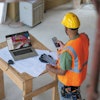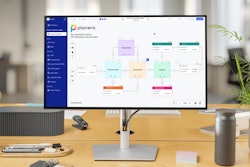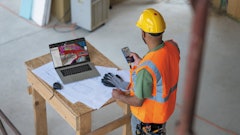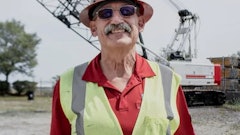
The construction industry has long grappled with the challenge of attracting and retaining skilled craft professionals. Following a significant slowdown in hiring, it’s more important than ever to reexamine how we engage with the people who bring our projects to life.
As demand begins to rise again, the workforce isn’t returning at the same pace. Many seasoned professionals are nearing retirement, and fewer new workers are entering the trades. This shift has left many companies asking how they can reconnect with the craft talent essential to their success.
The solution goes beyond simply filling open roles. It requires a thoughtful approach to communication, trust-building and creating a more inclusive and supportive experience for craft professionals. From job-site updates to recognition and career development, there are meaningful ways to strengthen these relationships and build a more resilient workforce.
Understanding the New Labor Landscape
The slowdown in construction hiring didn’t just pause projects; it disrupted long-standing relationships with the craft professionals who power the industry. As activity ramps back up, many firms are finding it harder than expected to reconnect with this essential workforce.
Unlike past cycles where workers returned as demand increased, today’s labor market is different. Many experienced professionals have retired or moved on to other industries. Meanwhile, fewer young people are entering the trades, creating a talent gap that traditional recruiting methods can’t easily close. ABC reported that the construction industry will need to attract an estimated 439,000 net new workers in 2025 to meet projected demand. Despite a younger workforce and slower growth in construction spending, contractors are still expected to face significant challenges in filling open positions.
Construction has always been a project-based business, with workers moving from site to site. This mobility makes it difficult to maintain consistent communication and engagement, especially when many craft professionals lack company email addresses or access to internal systems. As technology has advanced in other parts of business, engagement with field workers hasn’t kept pace, widening the disconnect. A recent example of progress is Lumber’s acquisition of BuilderFax, which aims to streamline how construction workers manage and share their credentials — making it easier for companies to stay connected with their workforce and support career growth.
Leveraging Technology to Reconnect and Recruit
Technology is playing a growing role in helping construction firms reconnect with their workforce. New platforms are emerging that are purpose-built for project-based work, streamlining communication, simplifying hiring and creating more meaningful engagement.
Digital profiles are replacing traditional resumes, allowing workers to build a living record of their skills, certifications and experience, all backed by real data. This makes it easier for employers to evaluate candidates based on actual capabilities and for workers to showcase their experience, especially those who’ve built careers through hands-on work rather than formal credentials.
Artificial intelligence is also transforming workforce management. AI-powered tools can match workers to projects more efficiently, shorten onboarding timelines and automate repetitive tasks. Some platforms analyze digital profiles to recommend candidates based on skills and project needs, while others offer virtual assistants to help new hires get up to speed quickly. These innovations save time and help ensure the right people are in the right roles, while boosting safety, productivity and job satisfaction.
Building a Culture That Retains and Grows Talent
As the industry continues to face labor shortages, retention has become just as important as recruitment. Forward-thinking firms should shift from short-term hiring fixes to long-term strategies that support recognition, flexibility, safety and career growth.
Recognition plays a powerful role in keeping workers engaged. Whether it’s calling out safe practices, celebrating milestones or sharing praise, acknowledging contributions helps workers feel valued. Inclusion is equally important, creating a culture where everyone feels welcome and heard, attracts a broader, more diverse workforce.
Flexibility is also becoming a key factor in workforce satisfaction. Some companies are experimenting with four-day workweeks or staggered shifts to improve morale and reduce burnout. At the same time, a strong safety culture builds trust and loyalty. The most effective programs go beyond compliance, empowering teams to speak up and take ownership of jobsite conditions.
Career development rounds out the retention strategy. Workers want to improve their skills, but they need clear pathways and support. Companies that invest in training, certifications and mentorship not only strengthen their teams but also show workers there’s a future for them in the industry. Making career paths visible and connecting newer employees with experienced mentors helps position construction as a long-term, rewarding career.
Integrating Succession Planning Into Workforce Strategy
In addition to retention, succession planning is emerging as a vital component of workforce strategy. Starting early gives companies the flexibility to adapt to unforeseen changes and helps identify and develop future leaders who align with company values. This reinforces the importance of long-term engagement and motivating workers by showing them they’re part of the company’s future.
Building a leadership pipeline is essential. Identifying high-potential employees and investing in their development through mentorship, stretch assignments and leadership training aligns directly with the need for visible career paths. It also helps ensure that institutional knowledge and culture are passed on effectively.
Another often-overlooked aspect of succession planning is the transfer of relationships. Future leaders must be equipped to manage key external relationships with customers, banks and bonding companies. Preparing workers for these responsibilities requires trust, training and exposure, which emphasizes the value of inclusive communication and leadership development.
Moving Forward
As we face the challenges inherent in labor shortages in the construction industry, it’s clear that the way forward lies in reconnecting with skilled workers. It’s crucial to shift our focus from short-term fixes to long-term strategies that foster recognition, flexibility, safety and career growth.
Traditional methods of communication have largely often fallen short, leaving a gap between companies and their workers. This disconnection has contributed to our current labor issues. However, digital platforms offer a promising solution, providing efficient ways to verify experience and qualifications and making it easier for skilled workers to showcase their talents.
Retention is equally important. Recognition programs, flexible schedules and a strong safety culture all play a significant role in keeping workers engaged and loyal. Offering opportunities for career development and making career paths visible can help workers see construction not just as a job, but as a long-term career. And by integrating succession planning into workforce strategies, companies can help ensure continuity, resilience and long-term success.
Our industry’s future depends on our ability to adapt and evolve. By embracing new communication methods and focusing on worker engagement, we can build stronger, more lasting relationships with the professionals who are the backbone of the construction industry. Together, we can overcome these challenges and ensure a bright future for all.



















